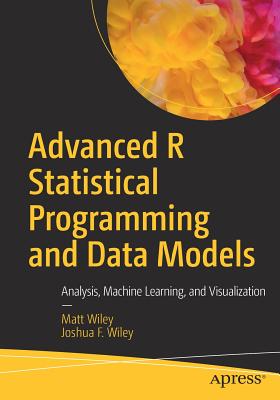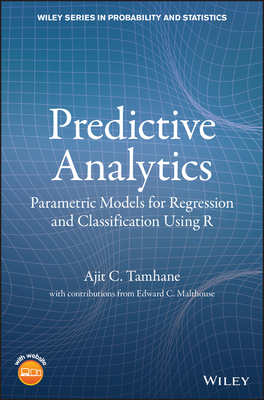Regression Modeling Strategies: With Applications to Linear Models, Logistic and Ordinal Regression, and Survival Analysis (Springer Series in Statistics)
暫譯: 迴歸模型策略:應用於線性模型、邏輯迴歸、序數迴歸及生存分析(斯普林格統計系列)
Frank E. Harrell Jr.
- 出版商: Springer
- 出版日期: 2015-08-26
- 售價: $5,410
- 貴賓價: 9.5 折 $5,140
- 語言: 英文
- 頁數: 582
- 裝訂: Hardcover
- ISBN: 3319194240
- ISBN-13: 9783319194240
-
相關分類:
R 語言
-
其他版本:
Regression Modeling Strategies: With Applications to Linear Models, Logistic and Ordinal Regression, and Survival Analysis (Paperback)
海外代購書籍(需單獨結帳)
商品描述
This highly anticipated second edition features new chapters and sections, 225 new references, and comprehensive R software. In keeping with the previous edition, this book is about the art and science of data analysis and predictive modeling, which entails choosing and using multiple tools. Instead of presenting isolated techniques, this text emphasizes problem solving strategies that address the many issues arising when developing multivariable models using real data and not standard textbook examples. It includes imputation methods for dealing with missing data effectively, methods for fitting nonlinear relationships and for making the estimation of transformations a formal part of the modeling process, methods for dealing with "too many variables to analyze and not enough observations," and powerful model validation techniques based on the bootstrap. The reader will gain a keen understanding of predictive accuracy and the harm of categorizing continuous predictors or outcomes. This text realistically deals with model uncertainty and its effects on inference, to achieve "safe data mining." It also presents many graphical methods for communicating complex regression models to non-statisticians.
Regression Modeling Strategies presents full-scale case studies of non-trivial datasets instead of over-simplified illustrations of each method. These case studies use freely available R functions that make the multiple imputation, model building, validation and interpretation tasks described in the book relatively easy to do. Most of the methods in this text apply to all regression models, but special emphasis is given to multiple regression using generalized least squares for longitudinal data, the binary logistic model, models for ordinal responses, parametric survival regression models and the Cox semi parametric survival model. A new emphasis is given to the robust analysis of continuous dependent variables using ordinal regression.
As in the
first edition, this text is intended for Masters' or Ph.D. level graduate students who have had a general introductory probability and statistics course and who are well versed in ordinary multiple regression and intermediate algebra. The book will also serve as a reference for data analysts and statistical methodologists, as it contains an up-to-date survey and bibliography of modern statistical modeling techniques. Examples used in the text mostly come from biomedical research, but the methods are applicable anywhere predictive models ("analytics") are useful, including economics, epidemiology, sociology, psychology, engineering and marketing.商品描述(中文翻譯)
這本備受期待的第二版包含了新章節和部分、225個新參考文獻,以及全面的R軟體。與前一版一致,本書探討數據分析和預測建模的藝術與科學,這涉及選擇和使用多種工具。這本書不僅僅呈現孤立的技術,而是強調解決問題的策略,以應對在使用真實數據而非標準教科書範例時,開發多變量模型所出現的各種問題。它包括有效處理缺失數據的插補方法、擬合非線性關係的方法,以及將變換的估計作為建模過程的正式部分的方法,還有處理「變量過多而觀察數據不足」的情況的方法,以及基於自助法的強大模型驗證技術。讀者將深入理解預測準確性以及將連續預測變數或結果進行分類的危害。本書現實地處理模型不確定性及其對推斷的影響,以實現「安全數據挖掘」。它還提供了多種圖形方法,以便向非統計學家傳達複雜的回歸模型。
《回歸建模策略》展示了非平凡數據集的全規模案例研究,而不是對每種方法的過度簡化說明。這些案例研究使用免費的R函數,使得書中描述的多重插補、模型構建、驗證和解釋任務相對容易完成。本書中的大多數方法適用於所有回歸模型,但特別強調使用廣義最小二乘法進行的長期數據的多重回歸、二元邏輯斯回歸模型、序數反應模型、參數生存回歸模型以及Cox半參數生存模型。對於使用序數回歸進行連續因變數的穩健分析,給予了新的重視。
與第一版一樣,本書旨在為已修過一般介紹性概率與統計課程的碩士或博士研究生提供,並且對普通多重回歸和中級代數有良好的掌握。本書也將作為數據分析師和統計方法學家的參考,因為它包含了現代統計建模技術的最新調查和參考書目。書中使用的例子大多來自生物醫學研究,但這些方法在任何需要預測模型(「分析」)的地方都適用,包括經濟學、流行病學、社會學、心理學、工程學和市場營銷。










